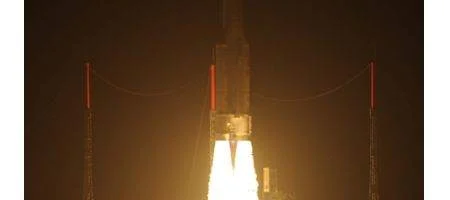Europe’s launched its heaviest-ever cargo to the International Space Station, carrying food, water, air and fuel, as well as experiments and spares.

ESA’s Automated Transfer Vehicle (ATV) Edoardo Amaldi lifted off from Europe’s Spaceport in Kourou, French Guiana at 05:34 CET this morning on an Ariane 5 launcher. After making its deliveries, it will be attached to the ISS for about five months to reboost its orbit.
The launcher, with its 20-tonne payload, started its flight over the Atlantic towards the Azores and Europe, with an initial eight-minute burn of Ariane’s upper stage taking it into a low orbit inclined at 51.6 degrees to the equator.
After a 42-minute coast, the upper stage reignited to circularise the orbit at an altitude of 260 km. About 64 minutes into flight, the supply ship separated from the upper stage.
Twenty-five minutes later, ATV-3 started deploying its four solar wings, which was completed a few minutes later, marking the end of the launch phase.
It’s the third in a series of five supply ships desined for the ISS, and has been processed and launched within a year.
“Europe providing an annual service to the Station becomes a reality due to the dedication, competence and interaction of our space industry, national agencies and ESA,” says Jean-Jacques Dordain, ESA’s director general.
“ATV-3 demonstrates Europe’s capacity to deliver regular high-profile missions to support demanding crewed spaceflight operations, in coordination with our international partners.”
The ship is now making a series of manoeuvres to rendezvous with the Space Station on 28 March at the projected time of 00:34 CET, where it will dock under its own control with Russia’s Zvezda module.






